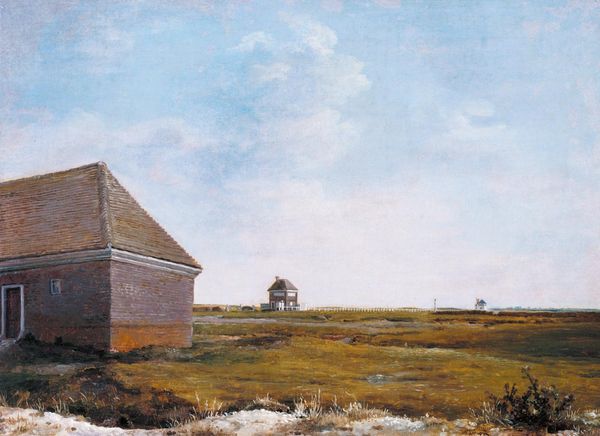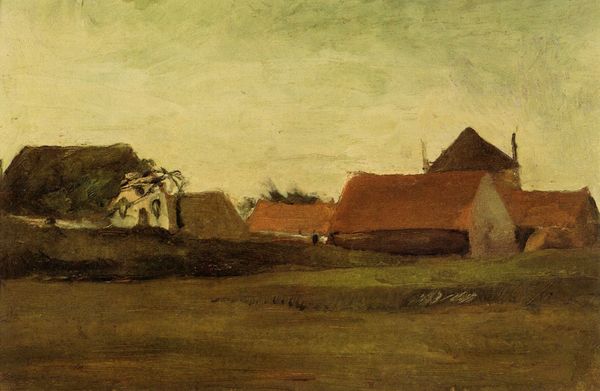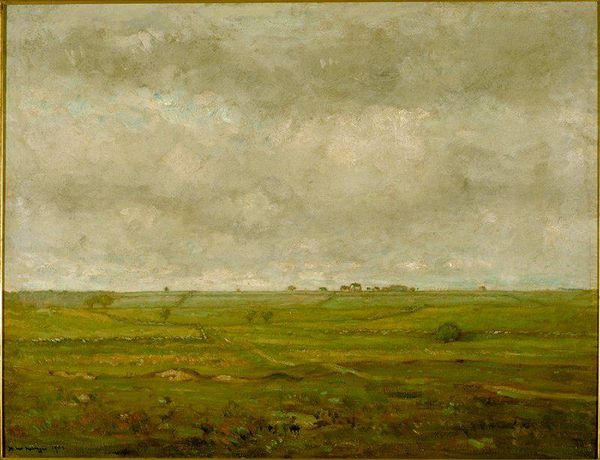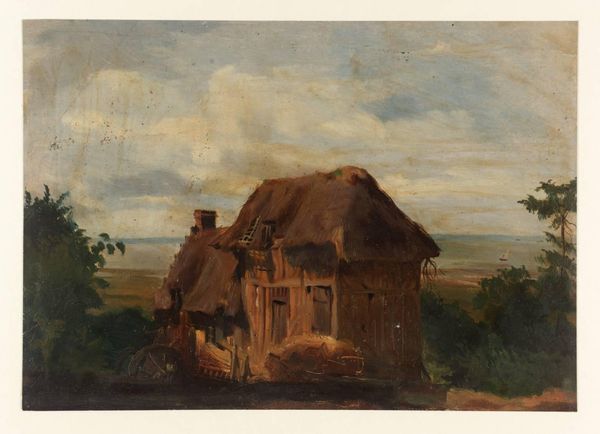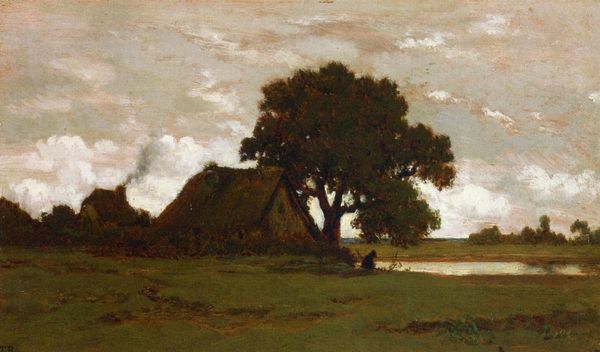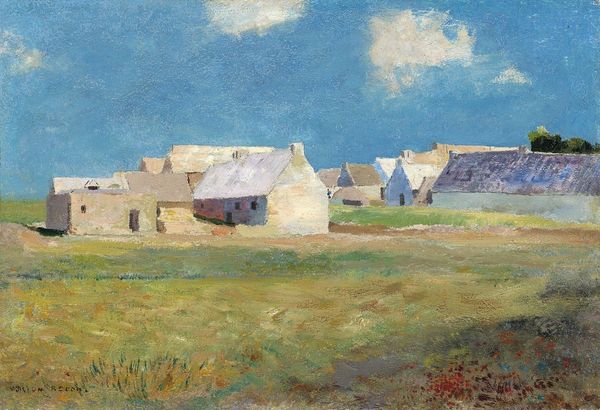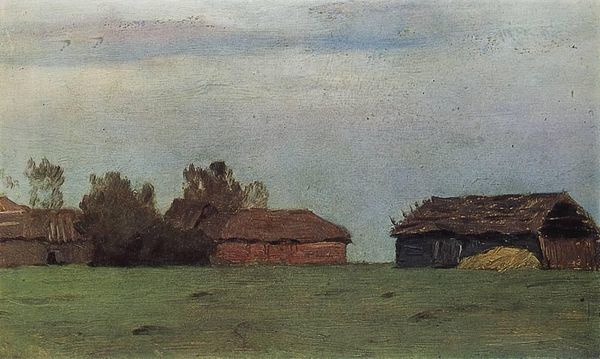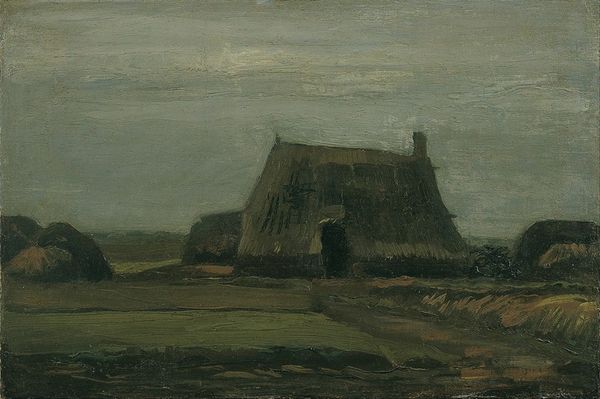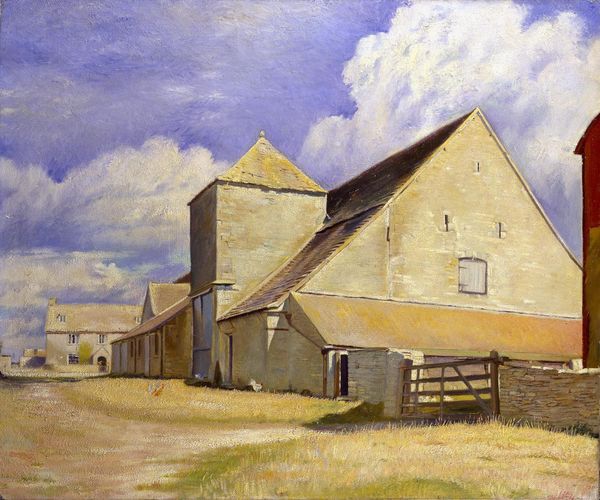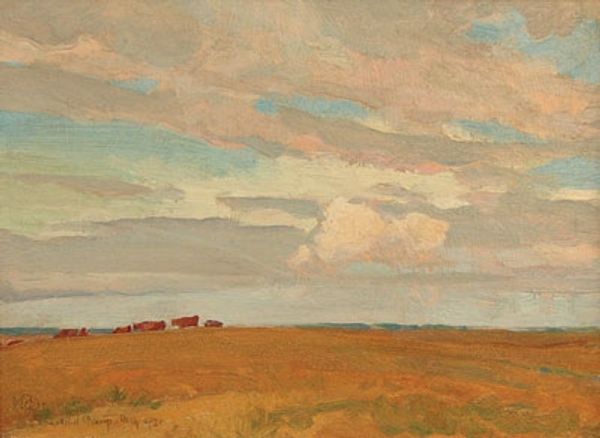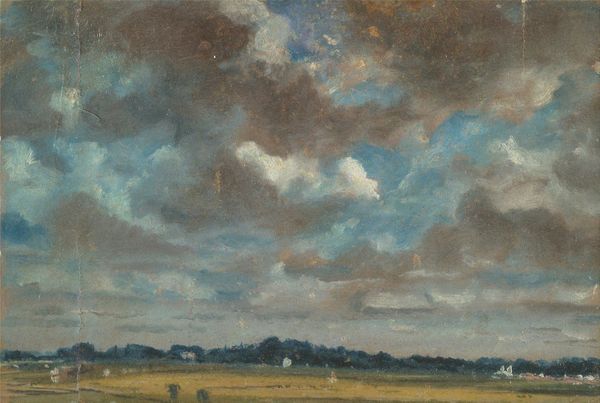
#
landscape
#
charcoal drawing
#
possibly oil pastel
#
oil painting
#
acrylic on canvas
#
underpainting
#
naturalistic tone
#
painting painterly
#
watercolour illustration
#
watercolor
#
shadow overcast
Copyright: Public Domain: Artvee
Editor: This is "Newmarket Heath, with a Rubbing-down House" by George Stubbs. I'm particularly drawn to the building's simple, almost utilitarian design amidst this vast landscape, and how those brushstrokes suggest an overcast day. How do you interpret this work, thinking about the ways Stubbs made it? Curator: It strikes me as deeply rooted in the material conditions of its time. The painting itself, with its potential use of oil paint—pigments derived from the earth, bound by oil—reflects a developing chemical and manufacturing process. What about the rubbing-down house? It’s a structure built specifically for the care of horses. This represents an investment of labor and resources—reflecting a system deeply intertwined with agriculture, sport, and even nascent industrialization. What kind of labour would have been used to construct this house? Who profited from it, and who maintained it? Editor: So, you're seeing the painting as more than just a pretty picture of a landscape? It's about how Stubbs uses materials and shows how they reflect the social structures of horse racing and land use. The "rubbing-down house" wasn’t just a backdrop but a very tangible symbol of wealth and the care – or perhaps even over-care – of valuable animals? Curator: Exactly. And consider Stubbs himself: as a painter he was part of that labour system, reliant on the patronage of the wealthy who owned these horses and estates. He was selling the images of status. Does knowing the social context make you reconsider his choice of painting this particular house? Editor: I suppose I was initially seeing a peaceful landscape, but now I recognize the painting's involvement in representing wealth and land usage. It also calls attention to materials involved from paint to the physical buildings which all reflect this intersection. Thank you! Curator: And, perhaps, also highlights the fact that art is rarely just “art” – it's entangled with labour, materials, and the society that produces it. That interplay between materials and how social power structures influence those decisions really provides a new way of appreciating this work.
Comments
No comments
Be the first to comment and join the conversation on the ultimate creative platform.
